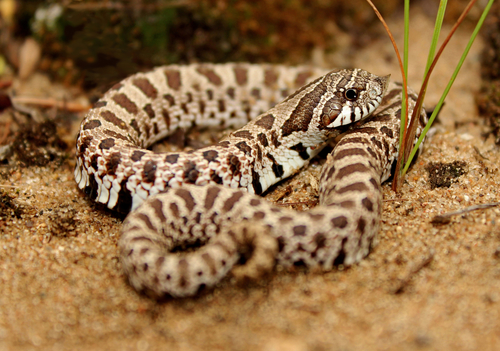
Western Hognose Snake
The Western Hognose Snake, with its distinctive upturned snout, is a master of deception. Found in arid grasslands, it burrows effortlessly and fakes death to deter predators. Its cobra-like display and playful nature make it a captivating encounter in the wild.
Low
Aggression
Least Concern
Conservation Status
Stable
Population Trend
Characteristics
Heterodon nasicus, commonly known as the Western Hognose Snake, is native to North America. It thrives in sandy, arid environments such as grasslands and semi-deserts. Notably, it has an upturned snout used for burrowing. This diurnal snake exhibits fascinating defensive behaviors, including playing dead and flattening its head to mimic a cobra.
Distribution Range of the Western Hognose Snake
Heterodon nasicus, commonly known as the Western Hognose Snake, is native to North America. Its geographical distribution includes the central United States and extends into parts of southern Canada and northern Mexico. Specifically, it can be found in states like Texas, Oklahoma, Kansas, Nebraska, South Dakota, and Montana, as well as in Alberta and Saskatchewan in Canada, and Chihuahua and Coahuila in Mexico.
Western Hognose Snake's Habitat
Environmental Conditions
The Western Hognose Snake typically inhabits arid to semi-arid environments. It prefers sandy or loose soil habitats, such as prairies, grasslands, and scrublands, which facilitate its burrowing behavior. The climate in these regions is characterized by hot summers and cold winters, with limited precipitation.
Ecological Niche
Heterodon nasicus occupies a niche as a burrowing snake that preys primarily on amphibians, such as toads, and occasionally small mammals and reptiles. Its upturned snout is an adaptation for digging in sandy soils. The species is known for its unique defensive behaviors, including flattening its body, hissing, and feigning death when threatened.
Copyright @ Nature Style Limited. All Rights Reserved.
 English
English